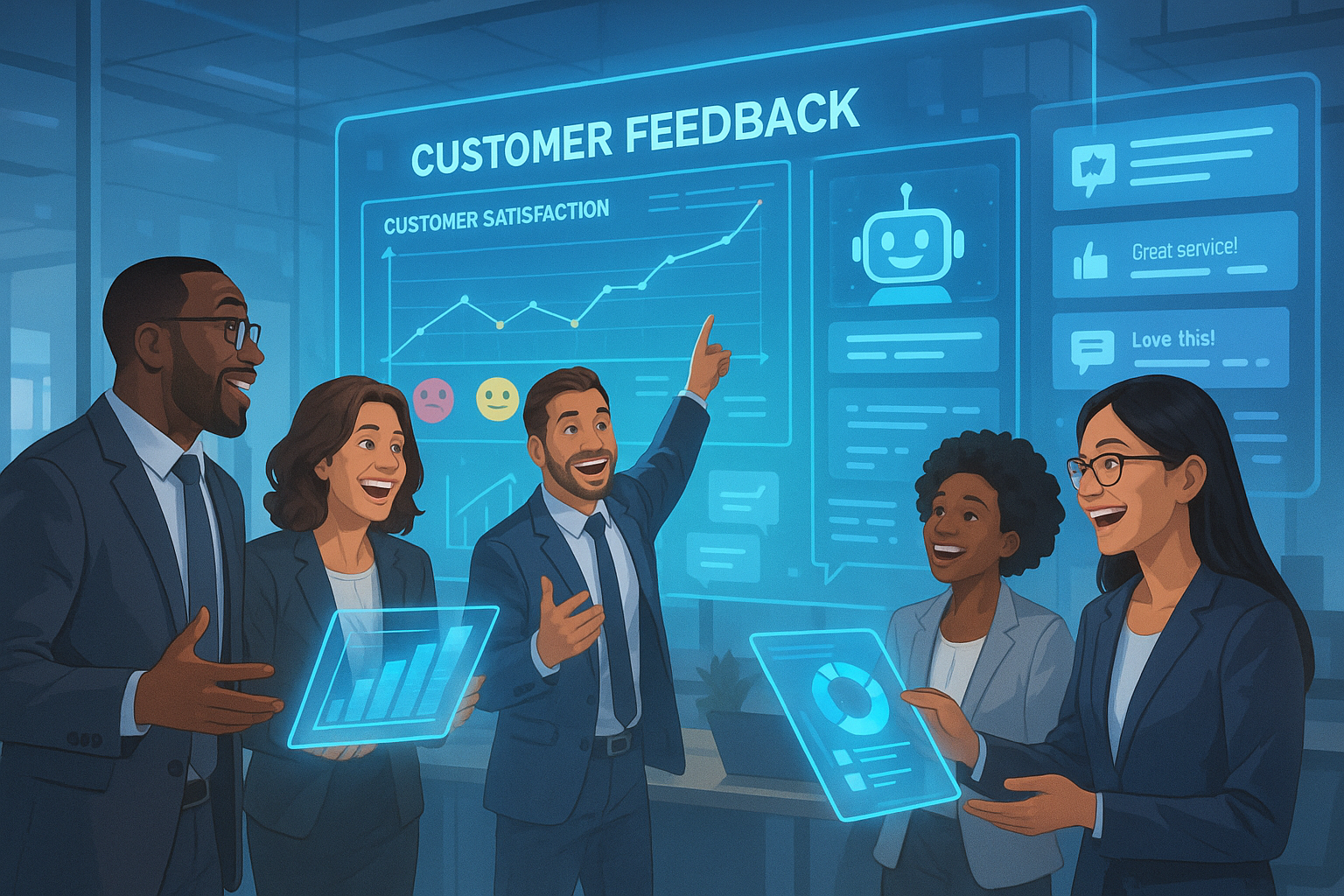Transformative Impact of AI-Driven Insights on Customer Feedback

Introduction
In today's fast-paced business landscape, the ability to understand and act on customer feedback is paramount. Enter artificial intelligence (AI)—a powerful tool revolutionizing how businesses convert raw feedback into actionable insights that drive profitability and customer satisfaction. By employing advanced AI technologies like chatbots, natural language processing (NLP), and robust analytics platforms, companies can efficiently sift through extensive data, elucidate customer sentiments, and implement targeted strategies that resonate with their audience.
The Power of AI in Analyzing Customer Feedback
AI's prowess begins with its ability to gather and interpret feedback seamlessly from various channels. Imagine integrating insights from surveys, social media, emails, online reviews, and live chat interactions into one cohesive platform. Thanks to sophisticated NLP algorithms, businesses are not only quantifying what customers express but also understanding the underlying emotions and motivations driving those sentiments. This nuanced comprehension allows businesses to move beyond surface-level feedback to deep, meaningful change.
Real-time engagement is where AI truly shines. AI chatbots are not just conversational agents; they provide instantaneous solutions to customer queries while simultaneously collecting useful feedback. This immediate responsiveness fosters trust and loyalty, creating a cycle where customers feel valued and heard.
Moreover, AI analytics platforms like Lindy and Insight7 can automatically synthesize vast amounts of feedback. These systems grade the importance of various themes, prioritize areas needing attention, and even offer concrete action steps. With automatic report distribution, businesses ensure that insights are shared with relevant teams, driving real improvements in customer experience and operational efficiency.
AI-Driven Case Studies: A Closer Look
Retail Chain Example
Consider a retail chain that employs AI tools to analyze customer experiences across its stores. By implementing AI-generated reports, store managers gain insightful feedback regarding product placement, staff interaction, and checkout efficiencies. Following the AI-driven recommendations, store layouts were revamped, staff training improved, and checkout processes optimized. The result? Enhanced customer satisfaction paired with increased operational efficiency, with decision-makers receiving regular automated summaries to facilitate quick actions.
Contact Center Example
In a similar vein, a contact center utilized personalized AI reports to monitor individual agent performance and customer interactions. This targeted feedback allowed for ongoing dynamic training, addressing the most pressing issues and refining agent skills. Automatic scheduling of reports kept both frontline staff and management in sync, streamlining decision-making and focusing training efforts where they were most needed.
These real-world applications exemplify the tangible benefits of AI, including elevated customer satisfaction scores, higher retention rates, and accelerated response times leading to increased lifetime customer value.
Trending AI Tools and Techniques for 2025
As we look toward the future, several AI tools are emerging as frontrunners in customer feedback analysis:
| AI Tool | Primary Functionality | Key Feature |
|----------------|-----------------------------------------------|------------------------------|
| Lindy | Feedback collection and real-time chat analysis| Adaptive surveys, sentiment analysis |
| Insight7 | Large-scale qualitative data analysis | Automatic theme extraction |
| Generative AI | Synthesizes feedback & drafts actionable reports| Personalized insights, scheduled delivery |
Technologies such as machine learning and sentiment analysis are proving especially effective in discerning customer intent, segmenting target audiences, and predicting future needs. In fact, recent studies indicate that about 85% of customer-service leaders plan to pilot conversational generative AI for scalable feedback mining by the end of 2025.
Best Practices for Integrating AI Technologies
For businesses contemplating the implementation of AI tools, several best practices can guide the process:
- Unified Data Platforms: Centralize feedback streams for holistic analysis.
- Iterative Implementation: Begin with pilot projects and demonstrate ROI before scaling up.
- Continuous Training: Regularly update AI models with new data to enhance predictive accuracy.
- Automated Reporting: Ensure timely delivery of insights to stakeholders who can act on them.
- Cross-functional Collaboration: Engage diverse departments like IT, marketing, and customer support to elevate AI initiatives holistically.
Key Metrics that Highlight AI Effectiveness
Integrating AI into customer feedback loops can yield measurable successes reflected in key performance indicators such as:
- Customer Satisfaction Scores (CSAT)
- Net Promoter Score (NPS)
- Customer Retention and Churn Rates
- Speed of Issue Resolution
- Revenue Growth from Repeat Customers
Businesses adopting AI-driven feedback analysis consistently report superior satisfaction rates, improved retention, faster resolutions, and notable revenue increases, thereby illustrating AI's role as both a profit driver and a fundamental element of modern customer experience management.
Conclusion
In conclusion, AI-driven customer feedback analysis is not just a trend; it's a critical component of customer-centric innovation and business growth. By integrating the latest AI tools, organizations can transform raw feedback into profitable, actionable initiatives with unprecedented speed and efficiency. At Untap, we empower businesses with intelligent chatbots tailored to enhance customer engagement and drive conversions. Embrace the AI revolution—let’s take customer service and satisfaction to the next level!